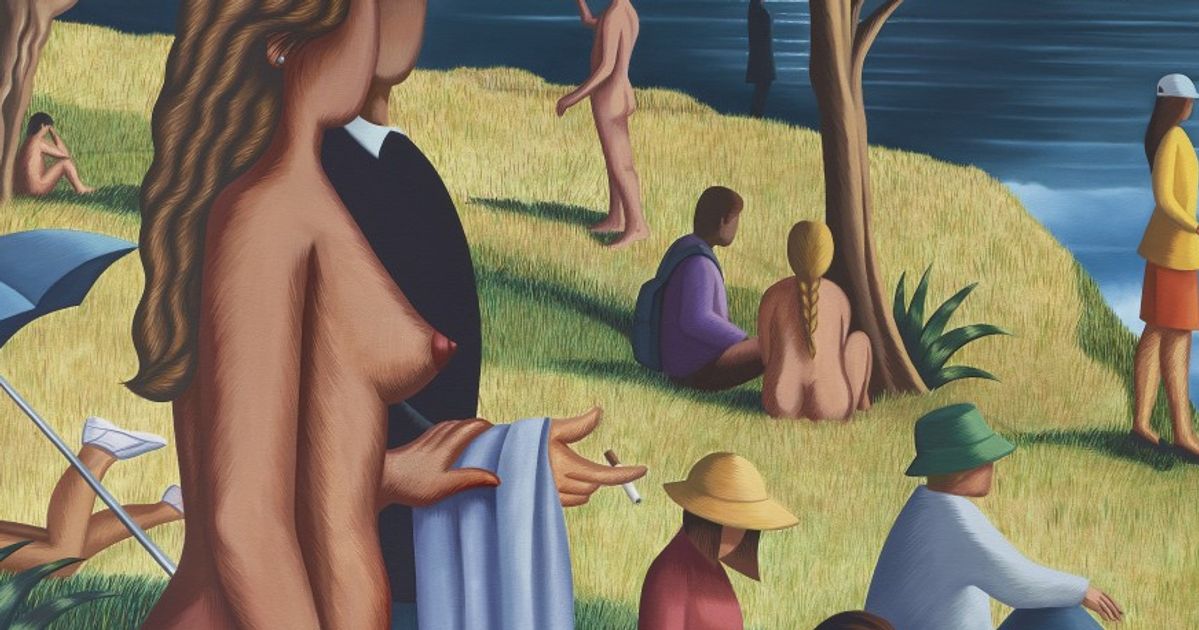ART WORLD NEWS
Three exhibitions to see in London this weekend
Installation view of Cache at Goodman Gallery, London
Courtesy of Goodman Gallery
Kapwani Kiwanga: CacheUntil 12 June, Goodman Gallery, 26 Cork St, W1S 3NDKapwani Kiwanga, the winner of last year’s Marcel Duchamp Prize, expands her long-standing investigation into colonial histories and the experience of diasporas with a new, materially innovative body of work. Most striking is a hefty installation made from unrefined sisal, a fibre used to make rope, which hangs from the ceiling and lightly sheds onto the floor. Further heaps of sisal strands are draped over metal structures affixed to the walls. Indigenous to the Yucatan region in modern day Mexico, sisal found its way to the African continent in the 19th century via German traders and became a huge cash crop for Tanzania, where Kiwanga’s father is from. Once shoring up the nation’s economy, its value eventually plummeted in the 1970s, denying Tanzania the chance to successfully transition into an independent socialist state. Downstairs, Kiwanga broaches a second lesser-known history—that of enslaved people from West Africa who, hoping for future self-sufficiency, hid red rice grains in their hair to plant in the colonies that they were taken to in Suriname. In Semblance (2020), a monumental white square on the floor is covered in a grid composed of minute clusters of ceramic sculptures that closely resemble brown rice grains. Here Kiwanga shows how much of what we consider ubiquitous, apolitical and autochthonous is in fact connected to migration and broader narratives of resistance and global capital. Reminding us that much of what believe to be certain is in fact rooted in dislocation and myth, these works encourage us to abandon current modes of thinking for more expansive, imaginative and hopeful futures.
Julie Curtiss, Le Futur (2021)
Courtesy of the artist and White Cube
Julie Curtiss: Monads and DyadsWhite Cube, 25-26 Masons Yard, SW1Y 6BUJulie Curtiss’s star has risen fast over the past two years. Following a spate of astounding auction results that transformed her from emerging artist to market darling at breakneck speed, she signed to White Cube in February 2020. Unsurprisingly, her highly anticipated first UK solo show doesn’t veer far from the style that first brought her mega success. Bringing together a group of new oil paintings, monochrome gouaches and small sculptures, it delivers an uneasy balance of the grotesque, absurd and captivating. Le Futur (2021), painted on a circular canvas, is Curtiss’s Surrealist take on Seurat’s masterpiece A Sunday Afternoon on the Island of La Grande Jatte (1886), in which flesh is disquietingly painted to resemble the texture of sleek fur. In Coldroom 1 and 2 (2020), the bloody carcasses of cows are too replaced with flowing, shiny waves resembling chestnut locks, creating a tone that is both obscene and sterile, repulsive yet transfixing.
Mat Collishaw, Echolocation (2021)
Courtesy of Mat Collishaw
Mat Collishaw: Echolocation Undercroft, 6 Riverside Walk, Kingston, KT1 1QNAn underpass in suburban London is an inauspicious place for a work of art. But Mat Collishaw’s three-channel video projection is a hauntingly atmospheric work that, despite its less than prepossessing site, manages to tap into the rich history of the once hugely important ancient town of Kingston that has now been absorbed into the conurbation of Greater London. The sole protagonist of Collishaw’s six minute film is a skeletal bat which flits in and around a spooky semi-transparent structure that Kingston locals would recognise as the nearby All Saint’s parish church. This now predominantly 19th-century building was the coronation site of several Saxon kings, including Athelstan, who was crowned first king of a unified England in Kingston in 925. Where now there are retail outlets, bars and bike racks was once hallowed ground and by creating a spectral virtual recreation of the church’s past and present architectural incarnations, Collishaw declares that he is “excavating” the church and “trying to resurrect some of the memories, an aura of this once sacred ground.” Appearing like a ghostly apparition, the film is beamed onto a polypropylene screen running from floor to ceiling along an 11-m-long stretch of the alleyway. Collishaw concedes that a red brick 1980s underpass in a busy shopping centre “might not be the first place you would go for a mystical insight”. But with this mysterious and eerie work he manages to unsettle our sense of both time and place and to confirm that the wonderful can often be found in the most surprising of locations.
Source link













